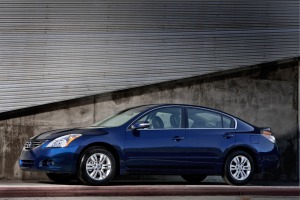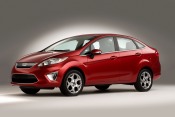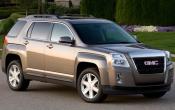How to Get a Used Car Bargain Part One
Identifying Your Target Cars & Arranging Financing

Here at Edmunds, we spend much of our time dispensing advice on new car buying, but the used car market is actually far larger: In 2008, 36.5 million used vehicles were sold, compared with 13.2 million new cars. Part of the reason for the disparity is the steep decline in a new car's value in just the first year of ownership — from 20-30 percent.
But when hunting for a used car bargain, how do you separate the diamonds from the dogs? And how do you keep from getting ripped off along the way? Our three-part article walks you step-by-step through the process, so you can go forward with confidence.
Step 1: Decide Your Price Range and Arrange Financing
If you're like most people and need to borrow money to buy a car, begin by considering how much car you can really afford. Using our Affordability Calculator, you can play with the numbers to obtain a price range to shop in, based on your monthly budget. (This works for both new and used cars.)
Then, the smartest move you can make is to arrange financing before you go to the dealership, because it puts you in a much stronger negotiating position. This important step presents a number of advantages because it:
- Keeps negotiations simple at a dealership
- Allows you to shop for competitive interest rates ahead of time
- Removes dependency on dealership financing
- Encourages you to stick to your budgeted amount
You can easily arrange financing using an online lender that takes applications over the Internet. The lender calls within 15 minutes to let you know if the loan is approved. Once you have a specific dealer in mind, the lender express-mails you a check. The check can be made payable to any new car dealer and is usually good for 30 days. If, at the end of this period, the check isn't used, there's no obligation.
Also remember to check for rates at a credit union. Just about anyone can join a credit union, and they are an excellent source of auto loans.
For more ideas on obtaining a competitive loan, see "How To Get an Auto Loan During the Credit Crunch."
Step 2: Identify Your Target Used Cars
In whatever class of vehicle you are shopping for, whether it is SUVs, pickup trucks or economy cars, there are the leading brands for which you will have to pay a premium price. But if you are willing to consider the competitors, you can save yourself a bundle.
We've coined a term to describe these good cars that are often overlooked: dark horse cars. While this is a mixed metaphor, it describes a type of car that bargain hunters should be aware of. Dark horse cars are virtually as good as the well-known cars — most notably Toyota and Honda — but you don't have to pay for the name.
Check the Edmunds Rating
As you build a list of cars to consider — the dark horse cars — check the Edmunds rating found on the individual cars' pages (see rating example). The score for each car is a combination of ratings in safety, reliability, performance, comfort and value.
Using this method, you should select a list of three target used cars to shop for. Using our Used Car Appraiser, write down the Edmunds.com True Market Value (TMV®) prices for each vehicle with the anticipated mileage. Keep in mind that cars typically accumulate about 12,000-15,000 miles per year. Anything over this mileage reduces the value of the car; anything less increases the car's value.
Print out your TMV pages and have them with you whenever you speak to a car salesman.
Preview of Part Two: Locating and Test-Driving Your Target Cars
In the second part of this series, we'll discuss steps three and four: how to locate your target used cars and how to test-drive and evaluate them. Then, in the third and final part, we'll show you how to negotiate effectively and how to close the deal successfully.









